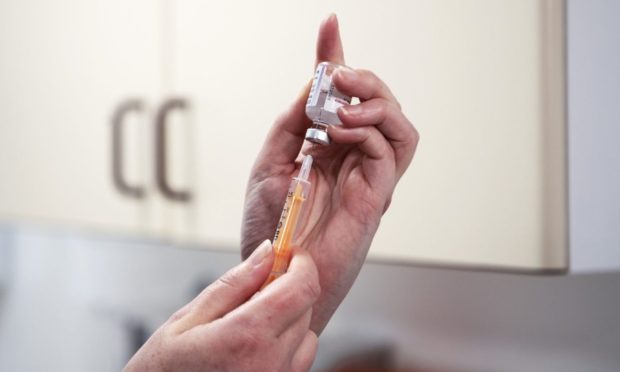The majority of adults in the UK now think positively about the Covid vaccine, a new study has found.
The Office of National Statistics has revealed that more people are becoming increasingly in favour of the jab, compared to figures before Christmas.
The study – Coronavirus and vaccine hesitancy – explored the groups most likely to be hesitant about, or negative toward, the Covid-19 vaccine.
Tim Vizard from the Office for National Statistics (ONS) said: “Over the past three months, we’ve seen people become increasingly positive about the Covid-19 vaccine, with over nine in ten adults saying they would have it, if offered, or having already had it.
“Of those who are hesitant about receiving the vaccine, it is younger and black adults who are most likely to say this, with concerns around side effects, long term effects and how well the vaccine works being the most common reasons.”
Positive vaccine sentiment has increased to 94% in the latest period between February 24 to 28 – up from 78% when the data was first collected from December 10 to 13 last year.
The key findings show the minority who are hesitant includes people who responded that they did not know, or did not want to say, how they felt about the vaccine, as well as those expressing negative sentiments.
Among adults aged 16 to 29 years, 17% reported hesitancy towards the coronavirus vaccine, compared with 1% of adults aged 80 years and over.
The same proportion of adults aged 70 to 74 years and those aged 75 to 79 years reported low vaccine hesitancy – both 1%.
More than 4 in 10 (44%) of Black or Black British adults reported vaccine hesitancy – the highest of all ethnic groups.
Parents living with a dependent child aged 0 to 4 years were the most likely to report vaccine hesitancy – 16% compared to 8% of non-parents or parents not living with a dependent child.
Adults living in the most deprived areas of England were more likely to report vaccine hesitancy at 16%, compared with 7% of adults in the least deprived areas of England.
The top three negative sentiments about the vaccine, consistent across all population groups, were side effects, long term effects on health and how well the vaccine works.
Similar proportions of men and women reported vaccine hesitancy – 9% and 10% respectively.
When exploring this by age, a slightly higher proportion of younger women, aged 16 to 29 years, reported vaccine hesitancy (19%) when compared with men in the same age group (15%). This gap narrowed for older age groups.
A similar proportion of disabled and non-disabled adults reported vaccine hesitancy (8% and 9% respectively).
However, adults without an underlying health condition were more likely to report vaccine hesitancy (10%) than those with an underlying health condition (6%).
